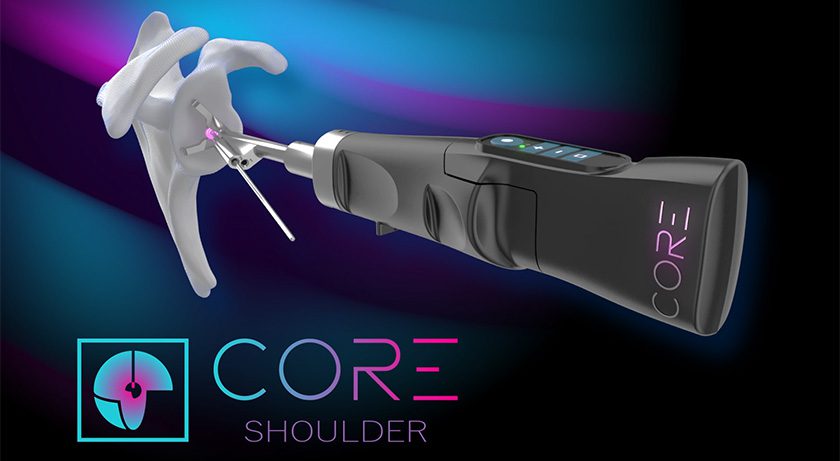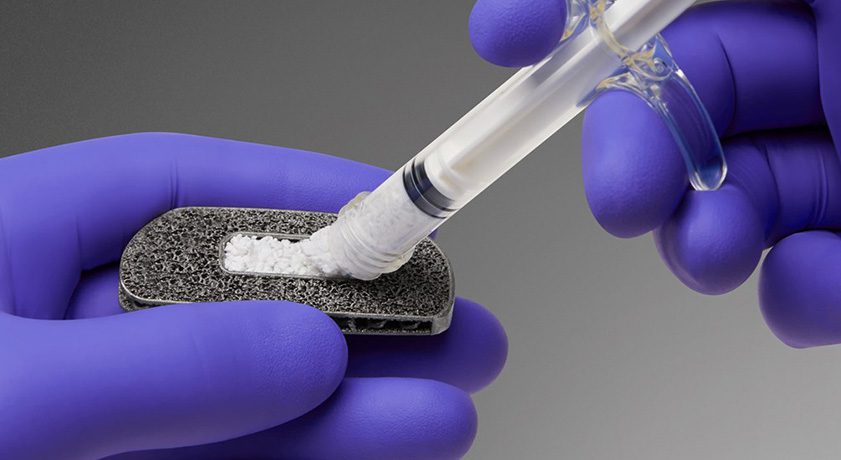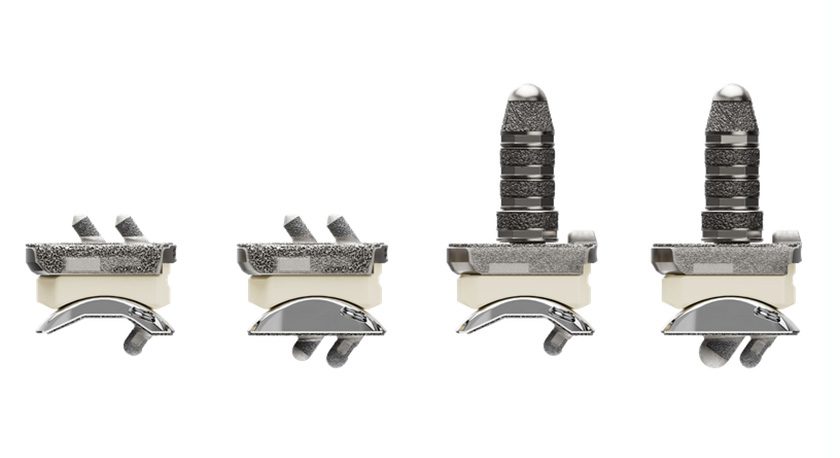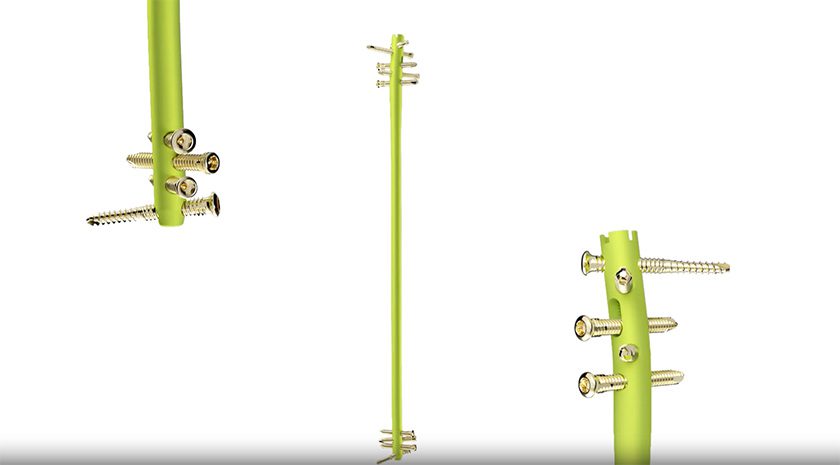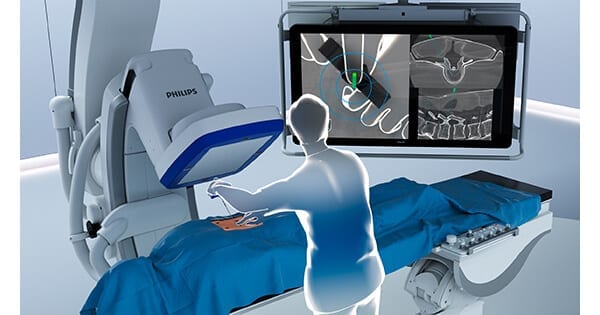

 Copy to clipboard
Copy to clipboard 
Royal Philips has expanded rollout of its augmented reality (AR) surgical navigation solution, ClarifEye, to Japan. Installed on a Philips interventional X-ray system in a hybrid operating room, ClarifEye was used to successfully treat patients with spinal stenosis and scoliosis via minimally-invasive image-guided procedures.
ClarifEye combines 2D and 3D visualizations at low x-ray doses with 3D AR navigation into one system. It enables surgeons to define and navigate critical trajectories for precise device placement while avoiding damage to fragile neurological and vascular structures close to the patient’s spine.
ClarifEye’s live-video computer vision and AR technology uses non-invasive position markers applied to the patient’s skin to track patient positioning, and overlays the resultant live video onto a 3D cone-beam CT of the patient’s spinal column. It allows surgeons to visualize the outside and inside of the patient in the same image, together with the planned and real-time trajectory of a Philips ClarifEye needle, without the need for live x-ray imaging. The system eliminates cumbersome reference frames used by other systems, giving surgeons unimpeded access to the patient.
Published data has demonstrated that in open deformity cases, ClarifEye had a better accuracy than similar surgeries performed by the same surgeon with no help from intra-operative navigation. Additional data on the clinical use of ClarifEye for minimally invasive procedures showed a 98% accuracy of pedicle screw placement, which is comparable to values reported in literature for other navigation and robotic systems.
Source: Royal Philips
Royal Philips has expanded rollout of its augmented reality (AR) surgical navigation solution, ClarifEye, to Japan. Installed on a Philips interventional X-ray system in a hybrid operating room, ClarifEye was used to successfully treat patients with spinal stenosis and scoliosis via minimally-invasive image-guided procedures.
ClarifEye...
Royal Philips has expanded rollout of its augmented reality (AR) surgical navigation solution, ClarifEye, to Japan. Installed on a Philips interventional X-ray system in a hybrid operating room, ClarifEye was used to successfully treat patients with spinal stenosis and scoliosis via minimally-invasive image-guided procedures.
ClarifEye combines 2D and 3D visualizations at low x-ray doses with 3D AR navigation into one system. It enables surgeons to define and navigate critical trajectories for precise device placement while avoiding damage to fragile neurological and vascular structures close to the patient’s spine.
ClarifEye’s live-video computer vision and AR technology uses non-invasive position markers applied to the patient’s skin to track patient positioning, and overlays the resultant live video onto a 3D cone-beam CT of the patient’s spinal column. It allows surgeons to visualize the outside and inside of the patient in the same image, together with the planned and real-time trajectory of a Philips ClarifEye needle, without the need for live x-ray imaging. The system eliminates cumbersome reference frames used by other systems, giving surgeons unimpeded access to the patient.
Published data has demonstrated that in open deformity cases, ClarifEye had a better accuracy than similar surgeries performed by the same surgeon with no help from intra-operative navigation. Additional data on the clinical use of ClarifEye for minimally invasive procedures showed a 98% accuracy of pedicle screw placement, which is comparable to values reported in literature for other navigation and robotic systems.
Source: Royal Philips

You are out of free articles for this month
Subscribe as a Guest for $0 and unlock a total of 5 articles per month.
You are out of five articles for this month
Subscribe as an Executive Member for access to unlimited articles, THE ORTHOPAEDIC INDUSTRY ANNUAL REPORT and more.
JV
Julie Vetalice is ORTHOWORLD's Editorial Assistant. She has covered the orthopedic industry for over 20 years, having joined the company in 1999.


